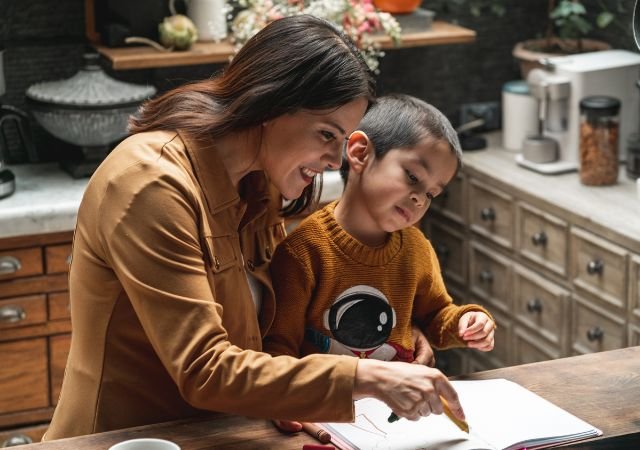ASHA SLPA Certification Exam Practice Test Questions Free: The speech-language pathology assistant (SLPA) plays a crucial role in supporting the speech-language pathologist by carrying out tasks that are planned, delegated, and supervised by the pathologist. This enables the SLPA to deliver exceptional patient care, provide speech-language pathology services, and improve the efficiency of the practice, all while adhering to local, state, and federal regulations. The ASHA SLPA Certification Exam will assess an applicant’s knowledge, skills, and abilities on these tasks. To prepare, consider using SLPA Exam Study Guides, SLPA Exam Questions, SLPA Interview Questions and Answers, and Free SLPA Certification Exam Practice Test Questions.

ASHA SLPA Exam Study Guide
Each section is designed to provide you with a comprehensive understanding of the topic and test your knowledge through practice questions. Be sure to review the material thoroughly and take the practice tests to gauge your readiness for the ASHA SLPA Certification Exam. Happy studying!
ASHA SLPA Certification
ASHA SLPA Certification Exam – Date | Syllabus | Programs | Prep
The SLPA Exam Blueprint [PDF] is a detailed guide developed through extensive research and analysis by SLPAs, SLPs, and educators. It ensures that the exam content reflects the latest data and best practices in the field. Key areas covered in the exam include:
- Providing Services by SLPA (75%)
- Providing Administrative Support by SLPA (20%)
- Participating in Prevention and Advocacy by SLPA (5%)
ASHA SLPA Certification Exam Practice Test Questions Free
Welcome to the multiple-choice questions designed to help you prepare for the ASHA SLPA Certification Exam. The role of a speech-language pathology assistant (SLPA) is to support the speech-language pathologist in delivering high-quality care to patients. This includes performing tasks that are planned, delegated, and supervised by the speech-language pathologist to enhance the effectiveness and efficiency of speech-language services. To succeed as an SLPA, it is important to understand the responsibilities of this role, adhere to professional guidelines, and ensure compliance with local, state, and federal regulations.
Instructions:
- Read Each Question Carefully: Take your time to understand the question and all the answer choices before selecting your answer.
- Select the Best Answer: Choose the answer that best completes the statement or answers the question based on the knowledge covered in the introduction.
- Review Your Answers: After completing all the questions, review your answers to ensure they reflect your best understanding of the material.
- Use This as a Learning Tool: These questions are designed to reinforce your knowledge and identify areas where further study may be needed.
Good luck, and remember that practice is key to your success on the ASHA SLPA Exam!
Providing Services by SLPA (75 Questions)
How should SLPAs self-identify to families, students, and clients?
- A) By showing a professional license
- B) Through name badges and verbal communication
- C) By displaying certificates
- D) By written documentation only
Which regulation must SLPAs comply with to ensure confidentiality?
- A) OSHA
- B) ADA
- C) HIPAA
- D) IDEA
SLPAs must adhere to reimbursement requirements for what purpose?
- A) To ensure correct billing
- B) To receive additional training
- C) To modify treatment plans
- D) To evaluate clinical outcomes
What defines the SLPA’s scope of practice?
- A) A general guideline of duties
- B) A set of procedures for clinical interpretation
- C) Specific tasks that SLPAs are allowed to perform
- D) A list of professional development requirements
What is the SLPA’s role in administering speech screenings?
- A) To interpret results
- B) To provide feedback to families
- C) To administer without clinical interpretation
- D) To develop screening tools
Language screenings administered by SLPAs should be:
- A) Interpreted immediately
- B) Conducted with clinical interpretation
- C) Administered without clinical interpretation
- D) Used to create treatment plans
Who should perform clinical interpretation of hearing screenings?
- A) The SLPA
- B) The supervising SLP
- C) The patient’s family
- D) The school principal
How should SLPAs handle developmental screenings?
- A) Administer them with clinical interpretation
- B) Ignore developmental milestones
- C) Administer without clinical interpretation
- D) Discuss results with parents only
Oral mechanism screenings conducted by SLPAs are done:
- A) To determine treatment plans
- B) With clinical interpretation
- C) Without clinical interpretation
- D) To replace comprehensive evaluations
What is the SLPA’s responsibility in assisting patients or caregivers?
- A) To interpret case history
- B) To complete case history forms and questionnaires
- C) To administer treatments
- D) To analyze data collected
In what capacity does the SLPA assist during assessments?
- A) By administering tests
- B) By providing clinical interpretation
- C) By supporting the SLP without administering or interpreting
- D) By developing assessment tools
When should the SLPA help in identifying the need for translation services?
- A) When requested by the client
- B) If the patient is linguistically or culturally different
- C) Only if the SLP is unavailable
- D) During routine screenings
How should SLPAs assist in utilizing translation services?
- A) By providing translation themselves
- B) By identifying appropriate services
- C) By requesting translation services for every patient
- D) By ignoring language barriers
What is required when following an SLP-developed treatment plan?
- A) To modify the plan as needed
- B) To strictly adhere to the plan without changes
- C) To seek additional training
- D) To interpret the treatment outcomes
How can SLPAs assist in designing treatment activities?
- A) By creating new treatment protocols
- B) By following evidence-based guidelines to meet goals
- C) By interpreting previous treatment data
- D) By administering activities without guidance
Direct speech therapy should be provided by SLPAs:
- A) Based on their own assessment
- B) Following SLP-developed treatment plans
- C) Only if the SLP is unavailable
- D) Without any supervision
Language therapy provided by SLPAs should:
- A) Be developed independently
- B) Follow SLP-developed treatment plans
- C) Exclude patient feedback
- D) Focus on administrative tasks
When delivering voice therapy, SLPAs should:
- A) Develop their own therapy techniques
- B) Follow SLP-developed treatment plans
- C) Focus on administrative duties
- D) Perform clinical evaluations
Fluency therapy by SLPAs is guided by:
- A) Patient preferences
- B) Personal experience
- C) SLP-developed treatment plans
- D) Randomly selected techniques
Cognitive therapy should be provided by SLPAs:
- A) Based on their own methods
- B) As instructed by SLP-developed treatment plans
- C) Only if the SLP is unavailable
- D) Through independent study
Pragmatic therapy involves:
- A) Developing new protocols
- B) Following SLP-developed treatment plans
- C) Administrative duties
- D) Creating patient evaluations
What technique is used for managing behavior during therapy?
- A) Behavioral management techniques
- B) Personal judgment
- C) Patient self-regulation
- D) Inconsistent approaches
How should SLPAs modify treatment activities?
- A) Based on personal preferences
- B) According to the patient’s observed status as instructed by the SLP
- C) Without reporting changes
- D) By following previous protocols
Reporting modified treatment activities should be done:
- A) Only if asked by the SLP
- B) After every session
- C) To the supervising SLP
- D) At the end of each month
What is the SLPA’s role in documenting performance?
- A) To prepare charts and records
- B) To analyze clinical outcomes
- C) To administer treatment plans
- D) To conduct evaluations
Performance data and observations should be reported to:
- A) The patient’s family
- B) The supervising SLP
- C) The school principal
- D) The insurance company
Augmentative and alternative communication devices should be:
- A) Programmed by the SLP
- B) Programmed by the SLPA
- C) Ignored if not needed
- D) Used without programming
How should SLPAs provide instruction for communication systems?
- A) By designing new systems
- B) By providing training on existing systems
- C) By avoiding system usage
- D) By referring clients to other professionals
Reporting and gathering data during meetings involves:
- A) Only collecting data
- B) Reporting observations to the supervising SLP
- C) Discussing data with clients
- D) Ignoring data collection
SLPAs are required to comply with:
- A) State laws only
- B) Reimbursement and confidentiality regulations
- C) Local office policies
- D) National educational standards
Which document ensures patient privacy?
- A) FERPA
- B) IDEA
- C) HIPAA
- D) ADA
What should be included in case history assistance?
- A) Clinical interpretation
- B) Form completion and data collection
- C) Therapy administration
- D) Assessment tools creation
How does the SLPA support assessment?
- A) By performing all evaluations
- B) By assisting without administration or interpretation
- C) By developing new assessment methods
- D) By interpreting results
When are translation services necessary?
- A) For all patients
- B) For patients needing linguistically or culturally appropriate services
- C) Only for international patients
- D) During initial screenings only
What is the SLPA’s role in following treatment protocols?
- A) To create new protocols
- B) To modify protocols
- C) To follow SLP-developed protocols
- D) To ignore existing plans
In what area should SLPAs design evidence-based activities?
- A) For their own training
- B) To address student, patient, and client goals
- C) For administrative purposes
- D) For clinical evaluations
SLPAs should document performance by:
- A) Creating new documentation methods
- B) Collecting data and preparing records
- C) Ignoring data collection
- D) Focusing on personal observations
Behavioral management techniques are used for:
- A) Administering medication
- B) Managing patient behavior
- C) Creating new treatment plans
- D) Conducting assessments
How are modifications to treatment activities handled?
- A) They are ignored
- B) Reported to the SLP
- C) Made without supervision
- D) Implemented independently
What should be done when documenting performance data?
- A) Focus on qualitative observations
- B) Prepare charts, records, and graphs
- C) Ignore patient feedback
- D) Conduct evaluations
What must SLPAs do when using augmentative communication systems?
- A) Develop new systems
- B) Program and provide instruction on the systems
- C) Avoid using the systems
- D) Refer clients to other specialists
Confidentiality regulations are crucial for:
- A) Billing purposes
- B) Documenting performance
- C) Protecting patient privacy
- D) Administering screenings
The SLPA’s role in assessment is limited to:
- A) Administering tests
- B) Supporting the SLP without clinical interpretation
- C) Developing treatment plans
- D) Evaluating patient progress
How should SLPAs report data?
- A) Only during meetings
- B) Consistently to the supervising SLP
- C) To patients directly
- D) To the insurance company
Which screening is done without clinical interpretation?
- A) Speech screening
- B) Cognitive screening
- C) Developmental screening
- D) All of the above
Which document guides the SLPA’s scope of practice?
- A) The SLP’s professional license
- B) The SLPA’s job description
- C) The state regulations
- D) The supervising SLP’s guidelines
When modifying treatment activities, what should be done?
- A) Keep the changes confidential
- B) Report modifications to the SLP
- C) Implement changes without supervision
- D) Document changes in the patient’s chart
What is the main purpose of documenting patient performance?
- A) To create patient profiles
- B) To track progress and effectiveness
- C) To prepare for audits
- D) To update treatment plans
Augmentative communication devices should be:
- A) Managed by the SLP
- B) Programmed by the SLPA
- C) Used without any setup
- D) Replaced regularly
How should SLPAs use translation services?
- A) By providing their own translation
- B) By using appropriate and culturally relevant services
- C) By asking the patient for translations
- D) By ignoring language differences
The SLPA’s role in providing direct speech therapy is:
- A) Independent of SLP guidance
- B) Based on following SLP-developed plans
- C) Based on personal experience
- D) Only if the SLP is unavailable
To assist the SLP in designing treatment activities, SLPAs should:
- A) Follow evidence-based approaches
- B) Use outdated methods
- C) Avoid new techniques
- D) Focus on administrative tasks
What is the role of behavioral management techniques?
- A) To develop new treatment plans
- B) To manage patient behavior during therapy
- C) To administer medication
- D) To perform clinical evaluations
When documenting performance, SLPAs should:
- A) Only prepare records
- B) Collect data and prepare charts
- C) Focus on personal notes
- D) Ignore data collection
How should SLPAs assist with case history forms?
- A) By interpreting results
- B) By helping complete relevant forms
- C) By designing new forms
- D) By analyzing patient history
Who should SLPAs report modified treatment activities to?
- A) The patient’s family
- B) The SLP
- C) The insurance company
- D) The school principal
The purpose of administering developmental screenings is to:
- A) Provide clinical interpretation
- B) Gather preliminary information
- C) Diagnose conditions
- D) Create treatment plans
How should SLPAs handle documentation?
- A) By focusing on patient feedback
- B) By preparing charts, records, and graphs
- C) By interpreting clinical results
- D) By creating new documentation tools
In what scenario should SLPAs utilize translation services?
- A) Only if the SLP requests it
- B) When there is a linguistic or cultural need
- C) For all patients regardless of need
- D) During routine evaluations
What is the SLPA’s role in programming augmentative devices?
- A) To develop new devices
- B) To program the devices as instructed
- C) To avoid device programming
- D) To replace outdated devices
SLPAs should assist in evidence-based treatment activities by:
- A) Developing new activities
- B) Following established guidelines
- C) Ignoring current practices
- D) Focusing on theoretical knowledge
What is the SLPA’s responsibility when providing direct therapy?
- A) To create treatment plans
- B) To follow the SLP-developed plans
- C) To modify treatment techniques
- D) To perform clinical assessments
Behavioral management during therapy should be:
- A) Applied inconsistently
- B) Used as directed by the SLP
- C) Ignored in favor of personal techniques
- D) Replaced with administrative tasks
Reporting performance data should be done:
- A) Only after each session
- B) Regularly to the supervising SLP
- C) At the end of each week
- D) Only during evaluations
How should SLPAs handle speech screenings?
- A) With clinical interpretation
- B) Without clinical interpretation
- C) By creating new screening methods
- D) By delegating to the SLP
The SLPA’s role in language screenings is:
- A) To interpret results
- B) To administer without clinical interpretation
- C) To modify screening tools
- D) To create new language assessments
How should SLPAs handle hearing screenings?
- A) By interpreting the results
- B) By administering without clinical interpretation
- C) By developing new screening techniques
- D) By avoiding hearing screenings
What is the SLPA’s responsibility regarding developmental screenings?
- A) To interpret results
- B) To administer without clinical interpretation
- C) To create developmental screening tools
- D) To develop treatment plans
For oral mechanism screenings, SLPAs should:
- A) Provide clinical interpretation
- B) Administer without clinical interpretation
- C) Create new screening methods
- D) Avoid performing screenings
In assisting with case history forms, SLPAs should:
- A) Provide clinical interpretation
- B) Help complete forms and questionnaires
- C) Develop new forms
- D) Administer tests
The SLPA’s role in providing direct cognitive therapy is:
- A) To follow SLP-developed treatment plans
- B) To develop new cognitive therapy techniques
- C) To ignore established guidelines
- D) To create assessment tools
For pragmatic therapy, SLPAs should:
- A) Develop new therapy techniques
- B) Follow SLP-developed treatment plans
- C) Administer therapy without guidance
- D) Focus on administrative tasks
How should SLPAs modify treatment activities based on patient status?
- A) Without supervision
- B) As instructed by the SLP
- C) By ignoring observed status
- D) Based on personal judgment
How should performance data be documented by SLPAs?
- A) By preparing charts and records
- B) By focusing on patient feedback
- C) By creating new evaluation methods
- D) By avoiding documentation
Augmentative communication systems should be:
- A) Used without training
- B) Programmed and instructed by SLPAs
- C) Ignored if not necessary
- D) Developed by the SLP
Answer Key
- B
- C
- A
- C
- C
- C
- B
- C
- C
- B
- C
- B
- B
- B
- B
- B
- B
- B
- B
- B
- B
- A
- B
- C
- B
- B
- B
- B
- B
- B
- C
- B
- B
- B
- C
- B
- B
- B
- B
- B
- B
- C
- B
- B
- D
- C
- B
- B
- B
- B
- B
- B
- B
- B
- B
- B
- B
- B
- B
- B
- B
- B
- B
- B
- B
- B
- B
- B
- B
- B
- A
- B
- B
- A
- B
Providing Administrative Support by SLPA (40 Questions)
What is an example of a visual aid used in therapy?
- A) Timer
- B) Picture card
- C) Calendar
- D) Notebook
Which material might be adapted for a student with a visual impairment?
- A) Large print books
- B) Audio recordings
- C) Color-coded charts
- D) Standard worksheets
What is an important consideration when preparing home programs for clients?
- A) Complexity of tasks
- B) Availability of resources
- C) Client’s preferences
- D) All of the above
Which tool can be used to help clients practice articulation at home?
- A) Picture flashcards
- B) Computer programs
- C) Audiobooks
- D) Both A and B
For a student with a hearing impairment, which material might be most beneficial?
- A) Visual schedules
- B) Audio recordings
- C) Scented markers
- D) Braille books
What is a common tool for managing appointment schedules?
- A) Calendar
- B) Phone book
- C) Clipboard
- D) Journal
When scheduling therapy sessions, which factor should be considered?
- A) Therapist’s availability
- B) Client’s schedule
- C) Facility hours
- D) All of the above
How often should you check for any scheduling conflicts?
- A) Daily
- B) Weekly
- C) Monthly
- D) Annually
What is a useful practice for handling last-minute cancellations?
- A) Reschedule immediately
- B) Ignore the cancellation
- C) Contact another client to fill the slot
- D) Cancel the whole day’s schedule
Which software is commonly used for scheduling in therapy practices?
- A) Word processor
- B) Spreadsheet
- C) Scheduling app
- D) Email client
What information is essential in client records?
- A) Contact details
- B) Medical history
- C) Therapy progress
- D) All of the above
How should confidential client information be handled?
- A) Discarded after use
- B) Shared with all staff
- C) Kept secure and private
- D) Posted publicly
How often should client records be updated?
- A) After every session
- B) Once a month
- C) Annually
- D) When requested by SLP
What should be included in a client’s therapy progress note?
- A) Summary of session
- B) Observations and outcomes
- C) Next steps or goals
- D) All of the above
Which is the best practice for maintaining physical client records?
- A) Store in a locked cabinet
- B) Leave on desk for easy access
- C) Share with colleagues openly
- D) Keep in an unlocked drawer
How frequently should therapy equipment be checked?
- A) Daily
- B) Weekly
- C) Monthly
- D) Annually
What is a common method for ensuring equipment is functioning correctly?
- A) Visual inspection
- B) Functional testing
- C) Cleaning
- D) All of the above
Who is typically responsible for equipment maintenance?
- A) SLPA
- B) SLP
- C) Facility manager
- D) All staff members
What should be done if equipment is found to be damaged?
- A) Continue using it
- B) Report it and remove from use
- C) Attempt to repair it without training
- D) Ignore it
Which action is part of routine equipment maintenance?
- A) Calibration
- B) Annual reviews
- C) Cleaning
- D) Both A and C
What is an effective way to keep track of supplies?
- A) Manual count
- B) Inventory software
- C) Random checks
- D) Ignoring stock levels
How often should inventory levels be reviewed?
- A) Daily
- B) Weekly
- C) Monthly
- D) Annually
What should you do when supplies are low?
- A) Order immediately
- B) Wait for a shortage
- C) Increase usage
- D) Discontinue use
What is a key component of maintaining supply inventory?
- A) Regular updating
- B) Ignoring discrepancies
- C) Stockpiling without checks
- D) Not recording received supplies
Which type of inventory system is commonly used?
- A) Manual ledger
- B) Computerized system
- C) Whiteboard
- D) Verbal tracking
What is a fundamental infection control practice?
- A) Hand washing
- B) Using shared equipment
- C) Ignoring hygiene practices
- D) None of the above
Which personal protective equipment (PPE) is commonly used?
- A) Gloves
- B) Aprons
- C) Masks
- D) All of the above
How should spills of bodily fluids be handled?
- A) Clean with regular cloth
- B) Report and clean with appropriate materials
- C) Ignore them
- D) Wipe with hands
What should be done with contaminated materials?
- A) Dispose of in regular trash
- B) Dispose of in biohazard containers
- C) Reuse after cleaning
- D) Store in open containers
Which procedure is important for preventing cross-contamination?
- A) Use the same tools for all clients
- B) Clean and disinfect tools between uses
- C) Share equipment freely
- D) Skip disinfection steps
What is an important task in supporting SLP supervision?
- A) Documenting therapy sessions
- B) Ignoring feedback
- C) Conducting sessions independently
- D) Avoiding record-keeping
How can you assist in SLP training?
- A) Providing resources
- B) Leading training sessions
- C) Observing and providing feedback
- D) All of the above
What should be included in supervisory documentation?
- A) Session details
- B) Therapist feedback
- C) Client progress
- D) All of the above
What is the purpose of maintaining compliance records?
- A) To ensure legal and professional standards are met
- B) To increase paperwork
- C) To avoid audits
- D) None of the above
How can SLPA support the SLP in maintaining compliance?
- A) By tracking deadlines
- B) By ignoring regulatory changes
- C) By handling complaints alone
- D) By working independently
What is a role of SLPA in in-service training?
- A) Organizing training materials
- B) Leading the training
- C) Evaluating the effectiveness of training
- D) Ignoring training needs
How can an SLPA contribute to public relations programs?
- A) Preparing informational materials
- B) Ignoring public outreach
- C) Avoiding interaction with the public
- D) Handling all media relations alone
What is a key component of marketing programs?
- A) Creating promotional materials
- B) Ignoring feedback
- C) Avoiding networking opportunities
- D) Not measuring success
What should be included in marketing materials?
- A) Program details
- B) Contact information
- C) Benefits of the service
- D) All of the above
How can you support the SLP with public relations?
- A) By designing brochures
- B) By preparing press releases
- C) By organizing community events
- D) All of the above
Answer Key
- B
- A
- D
- D
- A
- A
- D
- A
- B
- C
- D
- C
- A
- D
- A
- C
- D
- B
- B
- D
- B
- C
- A
- A
- B
- A
- D
- B
- B
- B
- A
- C
- D
- A
- A
- A
- A
- A
- D
- D
Participating in Prevention and Advocacy by SLPA (35 Questions)
1. What is one way to provide information on the prevention of communication disorders to at-risk individuals?
A) Conduct therapy sessions
B) Distribute educational brochures
C) Perform diagnostic tests
D) Offer individual counseling
2. Which of the following is a key role of an SLPA in advocacy?
A) Recommending specific therapies
B) Educating individuals about societal expectations and cultural beliefs
C) Providing direct clinical interventions
D) Diagnosing disorders
3. How can an SLPA advocate for cultural beliefs in therapy settings?
A) Ignore cultural differences
B) Use culturally inappropriate materials
C) Understand and respect cultural differences in communication
D) Focus only on speech development
4. What should an SLPA include when providing information to emergency responders about individuals with communication disorders?
A) Detailed medical history
B) Specific communication needs and strategies
C) Personal contact information
D) Detailed family history
5. What is a primary goal of advocating for public policies in the context of SLPA work?
A) To increase personal income
B) To improve access to services and research funding
C) To reduce the number of SLPAs
D) To limit the scope of practice
6. How can SLPAs contribute to awareness of swallowing disorders?
A) By conducting research
B) By creating public service announcements
C) By performing surgeries
D) By writing research papers
7. What should an SLPA do to respect linguistic differences in clients?
A) Ignore the differences and use only one language
B) Provide therapy in the client’s preferred language or use an interpreter
C) Demand clients adapt to the SLPA’s language
D) Use only written materials in the session
8. Which action best supports the prevention of developmental disorders?
A) Scheduling regular follow-up appointments
B) Educating caregivers on early signs and preventive measures
C) Providing medication
D) Ignoring preventive education
9. What is a key aspect of advocating at the local level for public policies?
A) Lobbying for large-scale funding
B) Engaging with community leaders and local organizations
C) Avoiding political involvement
D) Focus solely on international policies
10. How should an SLPA address societal expectations in their practice?
A) Align their practices with societal norms and values
B) Ignore societal expectations
C) Follow practices that contradict societal norms
D) Focus only on individual client needs
11. What is an effective way to increase awareness of communication disorders?
A) Hosting community workshops
B) Limiting public interactions
C) Avoiding community engagement
D) Relying solely on clinical settings
12. What should be the primary focus when advocating for individuals with communication disorders?
A) Emphasizing the client’s weaknesses
B) Highlighting the client’s strengths and needs
C) Focusing on the SLPA’s preferences
D) Ignoring individual differences
13. When providing information to caregivers about swallowing disorders, what should be emphasized?
A) Complex medical terminology
B) Clear, actionable steps and prevention strategies
C) Detailed surgical options
D) Limited information to avoid overwhelming them
14. What is an SLPA’s role in understanding accent modification?
A) Enforcing standard accents
B) Recognizing and respecting accent differences
C) Ignoring accent variations
D) Prescribing accent changes
15. How can an SLPA effectively advocate at the state level?
A) By organizing state-wide awareness campaigns
B) By focusing solely on local issues
C) By avoiding state-level involvement
D) By disregarding state regulations
16. What should an SLPA consider when working with clients from diverse cultural backgrounds?
A) Implementing one-size-fits-all strategies
B) Tailoring interventions to respect cultural differences
C) Ignoring cultural context
D) Following only standard practices
17. How can SLPAs provide useful information to emergency responders?
A) By offering generalized communication tips
B) By providing specific protocols and strategies for communication
C) By avoiding direct communication with responders
D) By offering only personal opinions
18. What is an essential component of advocating for public policies?
A) Prioritizing personal gains
B) Supporting policies that improve service access and research funding
C) Limiting the scope of advocacy
D) Ignoring policy changes
19. How can an SLPA help prevent communication disorders in children?
A) Conducting regular speech evaluations
B) Educating parents on developmental milestones and warning signs
C) Prescribing early interventions
D) Focusing only on existing disorders
20. What is a key strategy for SLPA advocacy in addressing linguistic differences?
A) Enforcing a single language policy
B) Providing resources and support for multiple languages
C) Ignoring clients’ preferred languages
D) Limiting communication options
21. How can SLPAs contribute to preventing developmental disorders?
A) By offering therapy to all clients
B) By providing educational materials to caregivers about developmental milestones
C) By conducting random assessments
D) By focusing only on high-risk cases
22. What role does an SLPA play in ensuring cultural sensitivity in therapy?
A) Ignoring cultural differences
B) Incorporating culturally relevant practices and materials
C) Enforcing standard cultural practices
D) Providing therapy in only one cultural context
23. When advocating for individuals with communication disorders, what is important to consider?
A) Only the clinical aspects of the disorder
B) The individual’s overall needs and societal factors
C) The SLPA’s personal opinions
D) Limiting information to only the client’s immediate needs
24. What should an SLPA do to support public policy changes at the national level?
A) Focus on local issues only
B) Engage in national advocacy efforts and campaigns
C) Avoid involvement in policy changes
D) Limit advocacy to personal practice
25. How can SLPAs assist in raising awareness about developmental disorders?
A) By creating informative pamphlets and presentations
B) By limiting their interactions with the public
C) By focusing solely on therapy sessions
D) By avoiding public speaking engagements
26. What is a primary focus when providing information about swallowing disorders to caregivers?
A) Detailed surgical options
B) Clear explanations of symptoms and preventive measures
C) Complex medical jargon
D) Limited information to avoid confusion
27. How can SLPAs support linguistic diversity in their practice?
A) By using a single language for all clients
B) By providing therapy in the client’s native language or using appropriate interpreters
C) By avoiding language-specific materials
D) By enforcing language uniformity
28. What should an SLPA emphasize when discussing communication disorders with emergency responders?
A) General communication tips
B) Specific needs and effective communication strategies for the individual
C) General medical information
D) Personal opinions on communication strategies
29. How can an SLPA contribute to improving public policies related to speech and language services?
A) By avoiding involvement in policy advocacy
B) By supporting and participating in policy change efforts
C) By focusing only on individual cases
D) By limiting their advocacy to local issues
30. What is an SLPA’s role in understanding and addressing societal expectations in their practice?
A) Ignoring societal norms
B) Aligning practices with societal values while respecting individual needs
C) Enforcing societal expectations
D) Focusing solely on therapy techniques
31. How can SLPAs help in advocating for services at the local level?
A) By engaging with local communities and policymakers
B) By limiting their interactions with local entities
C) By focusing only on national policies
D) By avoiding local advocacy efforts
32. What should an SLPA focus on when providing information about developmental disorders to at-risk individuals?
A) General developmental theories
B) Practical advice on early detection and intervention
C) Detailed medical research
D) Limited information to avoid overwhelming the individual
33. How can SLPAs ensure they respect cultural differences in their practice?
A) By using a standard approach for all clients
B) By adapting interventions to be culturally relevant and sensitive
C) By focusing only on clinical outcomes
D) By ignoring cultural contexts
34. What is a crucial aspect of educating caregivers about communication disorders?
A) Providing complex medical information
B) Offering clear, actionable advice and resources
C) Avoiding detailed explanations
D) Limiting communication to technical terms
35. How can SLPAs best advocate for individuals with communication disorders at the national level?
A) By participating in national advocacy organizations and initiatives
B) By focusing only on local issues
C) By avoiding national policy discussions
D) By restricting advocacy to personal practice
Answer Key:
- B
- B
- C
- B
- B
- B
- B
- B
- B
- A
- A
- B
- B
- B
- A
- B
- B
- B
- B
- B
- B
- B
- B
- B
- A
- B
- B
- B
- B
- B
- A
- B
- B
- B
- A








0 Comments